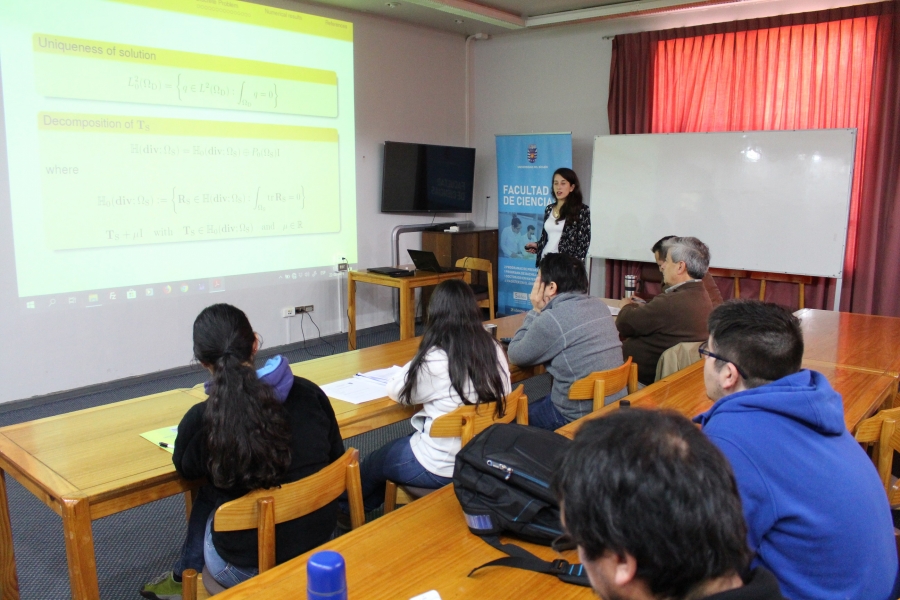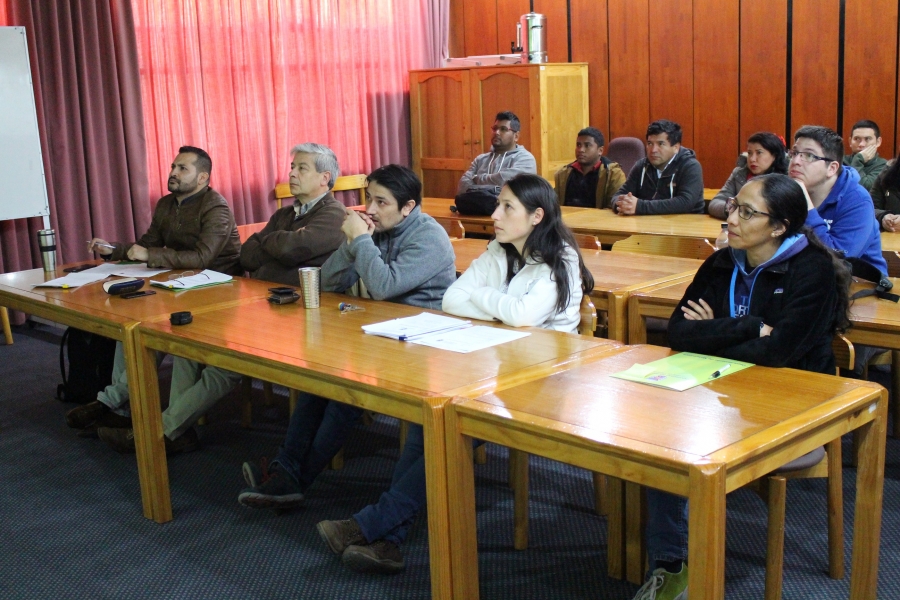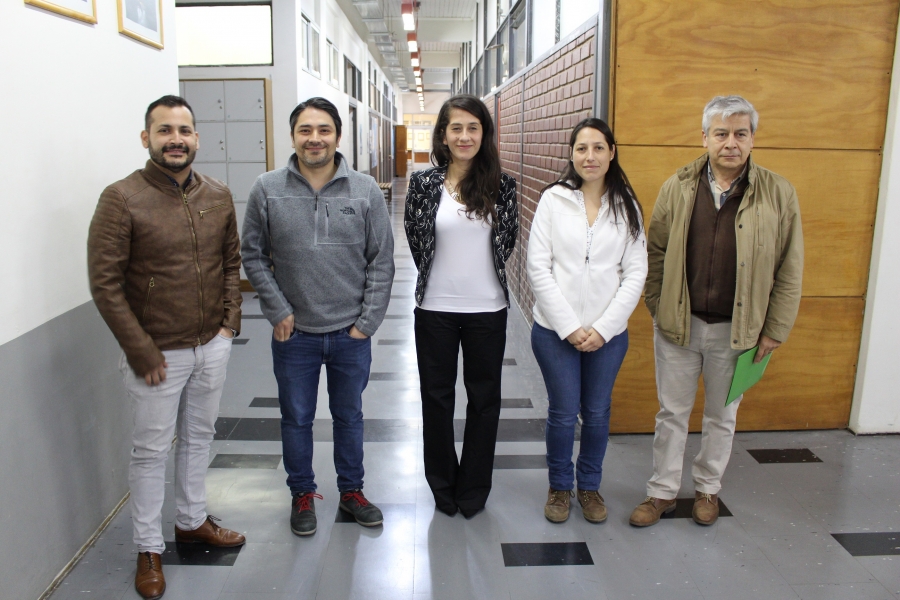 Nathalie Valenzuela obtained her Master's Degree in Mathematics with minor in Applied Mathematics from the Universidad Bío-Bío (UBB), after successfully defended her thesis: A New Augmented Mixed Finite Element Method for the Navier-Stokes-Darcy Problem, in front of the evaluation committee formed by the researchers Jéssika Camaño (Universidad Católica de la Santísima Concepción), and the director and co-director of the research, Ricardo Oyarzúa (UBB) and Gabriel Gatica (Universidad de Concepción, UdeC), respectively, all members of the Center for Research in Mathematical Engineering, CI²MA, and Eligio Colmenares (UBB).
Nathalie Valenzuela obtained her Master's Degree in Mathematics with minor in Applied Mathematics from the Universidad Bío-Bío (UBB), after successfully defended her thesis: A New Augmented Mixed Finite Element Method for the Navier-Stokes-Darcy Problem, in front of the evaluation committee formed by the researchers Jéssika Camaño (Universidad Católica de la Santísima Concepción), and the director and co-director of the research, Ricardo Oyarzúa (UBB) and Gabriel Gatica (Universidad de Concepción, UdeC), respectively, all members of the Center for Research in Mathematical Engineering, CI²MA, and Eligio Colmenares (UBB).
Nathalie is from Concepción and before beginning to study the master's degree, she studied a Bachelor's Degree in Mathematics at the UdeC. “I entered 2016 at the UBB. I chose this university for the postgraduate because it seemed to me that the contents of the master's degree were very applied”, she emphasizes. The theoretical challenge that faced in the context of her thesis comes from the advances that Professors Oyarzúa and Gatica had already obtained regarding Navier-Stokes and related problems. “They had already got several recent papers about it and we wanted to know what would happen if we coupled that problem with Darcy. This is also a problem that has many physical applications. On the other hand, we were interested to know if we could reach another result by introducing a stress tensor", she details about practical applications such as the flow of water that moves through the underground layers, or oil extraction.
 “I've been working on this type of coupling problem for quite some time”, Ricardo Oyarzúa explains about the approach to the problem presented in Nathalie's research. “We arrive at a formulation applying an augmented method for Navier-Stokes, which allows us to obtain a system with less unknown terms, which implies a simpler, more efficient, and less expensive computational implementation. That was our goal and we achieved it” In the US oil extraction industry, the academician explains, there is a lot of interest in the application of this kind of equations, and he sustains that “Texas is a reference for this type of model”. Regarding new lines of research, the academician points out that the elasticity factor can be included in the problem. “Instead of including Darcy's equations, we can explore incorporating elasticity equations that model the interaction of the fluid with a medium that, in addition to being porous like the one we studied in Nathalie's thesis, is also elastic. That has applications in medicine and biology, for example in the circulatory system, where blood is fluid and veins are porous and elastic medium”, CI²MA researcher explains.
“I've been working on this type of coupling problem for quite some time”, Ricardo Oyarzúa explains about the approach to the problem presented in Nathalie's research. “We arrive at a formulation applying an augmented method for Navier-Stokes, which allows us to obtain a system with less unknown terms, which implies a simpler, more efficient, and less expensive computational implementation. That was our goal and we achieved it” In the US oil extraction industry, the academician explains, there is a lot of interest in the application of this kind of equations, and he sustains that “Texas is a reference for this type of model”. Regarding new lines of research, the academician points out that the elasticity factor can be included in the problem. “Instead of including Darcy's equations, we can explore incorporating elasticity equations that model the interaction of the fluid with a medium that, in addition to being porous like the one we studied in Nathalie's thesis, is also elastic. That has applications in medicine and biology, for example in the circulatory system, where blood is fluid and veins are porous and elastic medium”, CI²MA researcher explains.
As for his immediate future, Nathalie, says she is interested in continuing doing research, although she is also very interested in teaching. “I love teaching a lot. I hope to be able to do both in parallel”, she explains and highlights that, as a result of her thesis research, she and Professors Gatica and Oyarzúa obtained a preprint, which was submitted for publication to an ISI indexed journal of the area.





